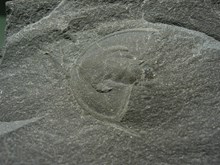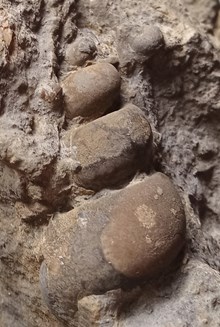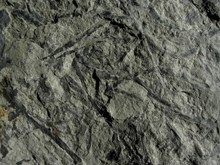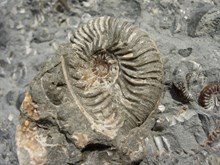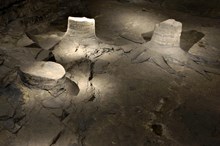06 October, 2022
Scotland’s fossil enthusiasts urged to have their say on revised Code
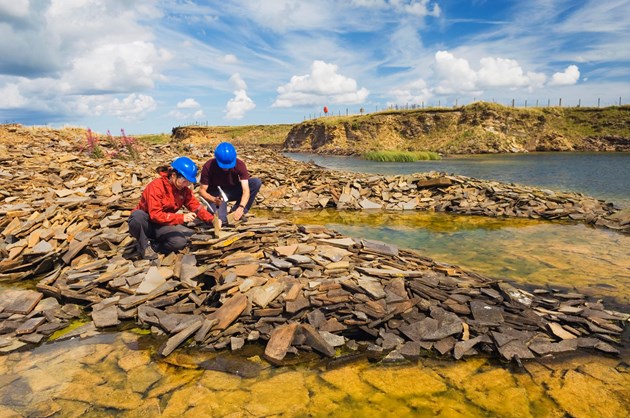
Some of the world’s rarest and most important fossil discoveries have been made in Scotland, from Jurassic dinosaur footprints on Skye, fragments of an equatorial coal forest in Glasgow and the bones of 250-million-year-old reptiles that roamed the desert sands of what is now Elgin.
Now NatureScot is urging those with an interest in Scotland’s fossil heritage to have their say on the revised Scottish Fossil Code, which gives best practice advice on the collection and conservation of fossils.
Scotland’s nature agency is seeking views on the refreshed Code, first published in 2008 and due for relaunch in early 2023. The Code gives information on how to manage and safeguard Scotland’s world renowned fossil heritage. It also sets out guidance on how to collect and look after fossils in a responsible way without damaging them or the areas where they are found.
Scotland boasts some of the rarest and most scientifically important fossils in the world, from some of the earliest land plants and fish to early mammal and dinosaur remains. Some examples of exceptional Scottish fossils include:
- Extraordinary Silurian age (430 million-year-old) water scorpions of Lesmahagow.
- Trackways that can be seen on the Fife coast and Arran, left by giant centipede-like animals.
- A 410 million-year-old perfectly preserved wetland ecosystem frozen in time by a hot spring at Rhynie, Aberdeenshire. The world famous Rhynie Chert includes the fossils of small plants and some of the world’s earliest insect and spider-like animals.
- Beautifully preserved fossils found in Caithness, Orkney and Shetland of fish that lived in a vast freshwater lake which once covered the area 370 million years ago.
- One of the most important fossil shark localities in the world found in Carboniferous rocks (330 million years old) at Bearsden in Glasgow.
- Stands of Carboniferous fossil tree stumps in Victoria Park, Glasgow, and at Saltcoats on the Ayrshire coast, which are fragments of equatorial coal forests.
- Bones and trackways of 250 million-year-old reptiles that lived around desert sand dunes in what is now the Elgin area.
- 170 million-year-old Jurassic dinosaur, pterosaur and mammal remains on Skye.
- Exceptionally well preserved leaves on Mull and Skye from trees that were living in a warm climate around 60 million years ago as the North Atlantic Ocean was opening.
- The remains of animals, including polar bear, in the caves of Assynt, dating from the end of the last glaciation.
NatureScot’s Head of Biodiversity and Geodiversity, Katherine Leys said: “Fossil collecting is a popular hobby and amateur collectors quite often uncover rare and scientifically important finds. But sometimes our fossil heritage is vulnerable to irresponsible collecting that can damage sites and the fossils they contain.
“We’re keen to hear from people with an interest in Scotland’s fossils, whether that’s amateur fossil collectors, landowners or researchers. We want the new Code to reflect their needs and interests.
“The Scottish Fossil Code is about promoting and encouraging responsible fossil collecting and fossil resource management. By following the Code people can stay within the law and follow best practice in collecting and storing fossils. It’s vital for the development of geological science that young people continue to collect and learn from Scotland’s globally important fossil resources.”
Contact information
- Name
- NatureScot Media
- Telephone
- 0131 316 2655
- media@nature.scot
Notes to editors
NatureScot is inviting individuals, organisations and specific interest groups to comment on the refreshed and updated Scottish Fossil Code. This is available for public view at https://www.nature.scot/doc/updating-scottish-fossil-code. The consultation period ends on Thursday 17 November.
Comments received during the public view will inform the preparation of the final Code that is expected be published in early 2023.
NatureScot is Scotland's nature agency. We work to enhance our natural environment in Scotland and inspire everyone to care more about it. Our priority is a nature-rich future for Scotland and an effective response to the climate emergency. For more information, visit our website at www.nature.scot or follow us on X at https://x.com/NatureScot
’S e NatureScot buidheann nàdair na h-Alba. Bidh sinn a’ neartachadh àrainneachd na h-Alba agus a’ brosnachadh dhaoine gu barrachd suim a chur ann an nàdar. Tha e mar phrìomhachas againn gum bi nàdar na h-Alba beairteach agus gun dèilig sinn gu h-èifeachdach le èiginn na gnàth-shìde. Tha an tuilleadh fiosrachaidh aig www.nature.scot no air X aig https://x.com/NatureScot


